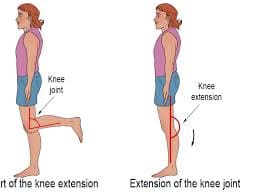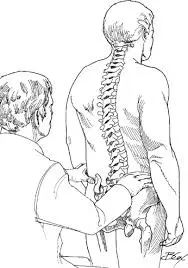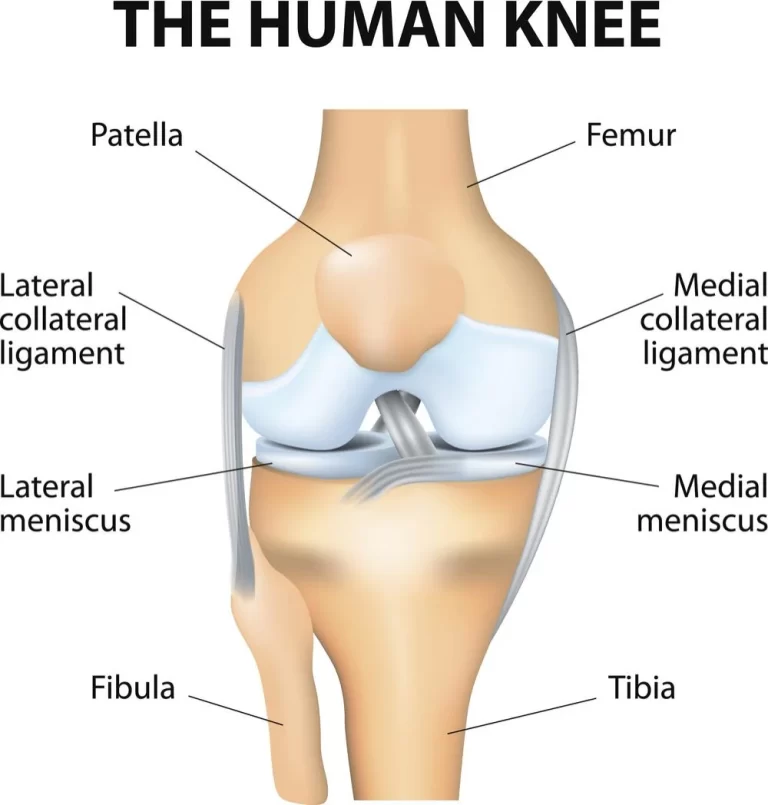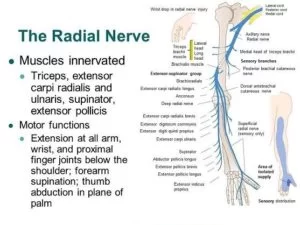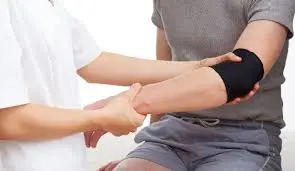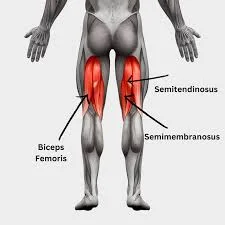Knee Flexion and Extension
Knee Flexion and Extension: What Is It?
Knee flexion and extension are fundamental movements that play a crucial role in our daily activities, from walking and running to sitting and standing. These movements involve the bending (flexion) and straightening (extension) of the knee joint, which is one of the largest and most complex joints in the human body.
The femur, or thigh bone, and the tibia, or shinbone, are joined by the knee joint, which is a hinge joint. The patella articulates with the femur bone and is also involved in knee movement.
Flexion: The bending motion that brings the thigh and lower leg closer together by reducing their angle is referred to as flexion. Your knee joint is flexed when you raise your heel up to your buttocks. One of the basic movements utilized in sitting, kneeling, and leg lifting is flexion.
Extension: Conversely, flexion is the opposite movement of extension. It refers to extending or straightening the knee joint to enhance the angle that the lower leg and thigh form. Your knee joint is extended when you bring your leg back to an upright position after it has been flexed. For actions like kicking, jumping, or standing up from a seated position, extension is essential.
The coordinated activities of the muscles, tendons, ligaments, and other tissues surrounding the knee joint are necessary for both knee flexion and extension. The biceps femoris, semitendinosus, and semimembranosus muscles, which are situated in the rear of the thigh, make up the hamstrings, which are the main muscles used in knee flexion. They force the knee to flex when they contract. Knee flexion is also aided by other muscles, such as the gastrocnemius (calf muscle).
The quadriceps muscles, which include the rectus femoris, vastus lateralis, vastus medialis, and vastus intermedius, are principally responsible for knee extension, on the other hand. The front of the thigh contains the quadriceps muscles, which are in charge of straightening the knee joint. Knee extension results from the contraction and stress of these muscles on the patellar tendon, which attaches the quadriceps muscles to the tibia.
It is essential for healthy joint function and total lower limb movement to maintain a balance between knee flexion and extension. Any weakness, imbalances, or injuries that influence these movements can result in a restricted range of motion, impaired stability, or trouble going about daily tasks.
What Is Knee Flexion?
Knee flexion is defined as bending or moving the knee joint, which causes the angle between the femur (thighbone) and tibia (shinbone) to decrease. It is among the most crucial knee movements, enabling motions like sitting, squatting, walking, and sprinting.
Knee flexion is the bending of the knee joint to move the heel closer to the buttocks as one is standing. The hamstrings in the rear of the thigh are one of the muscles that control this movement. As they contract to raise the lower leg toward the buttocks, the hamstrings are essential in bending the knee.
Knee bending is necessary in daily life and for a number of functional activities. This gives the lower limb a broad range of motion, which helps with walking and running by forcing the body forward. Additionally, it makes it possible for people to bend, squat, climb stairs, and kneel.
It’s critical to measure knee flexion in order to evaluate the joint function and spot any potential restrictions or anomalies. Physicians frequently measure a patient’s range of motion during knee flexion using a goniometer, a tool for measuring joint angles. This data can be used to monitor the course of healing from knee joint injuries or surgeries, diagnose illnesses, and create rehabilitation plans.
Flexor muscles of the knee
A collection of muscles called the knee flexors are found in the back of the leg and are crucial in knee flexion. Together, these muscles allow the knee to bend and the leg to rise toward the buttocks.
The flexor muscles of the knee are:
Three muscle groups on the back of the thigh are called the hamstrings. Among them are:
- Biceps femoris: This muscle, which is found on the outside of the thigh, has two heads: a long head and a short head.
- Semitendinosus: Inside the thigh lies a muscle called the semitendinosus.
- Semimembranosus: The semimembranosus muscle is located on the inside thigh as well.
- Gastrocnemius: Forming the calf, the gastrocnemius muscle is a big muscle in the rear of the lower leg. When the foot is off the ground, it helps to bend the knee when it crosses the knee joint (during walking or running).
- Popliteus: A little muscle situated behind the knee joint is called the popliteus. Moving the tibia laterally to expand the knee joint before flexion, contributes to the start of knee flexion.
These muscles cooperate to flex the knee joint, and they are essential for a variety of movements, including bending, walking, and sprinting. Maintaining health and preventing injuries to the knee requires proper fitness and flexibility of these muscles.
Knee Flexion Range of Motion
The range of motion or flexion that the knee joint may accomplish during flexion is known as the knee flexion range of motion (ROM). It shows the arc that the knee can bend through and is expressed in degrees.
Adults are often thought to have a normal range of motion for their knees between 135 and 145 degrees. This implies that the knee joint may be bent in a way that causes the heel to approach or contact the buttock when the lower leg approaches it.
It is crucial to remember that each person’s real range of motion will fluctuate according to their age, physical health, past injuries, and unique anatomical features. Depending on these variables, some persons may have more or less knee flexion.
When diagnosing and tracking a number of disorders, including knee osteoarthritis, ligament damage, muscle strains, and postoperative rehabilitation, measuring the range of motion in the flexion of the knee is crucial. To precisely ascertain the range of motion in knee flexion, medical professionals typically utilize a goniometer and a joint angle tool. This measurement directs treatment and rehabilitation planning by assisting in assessing the degree of limits or anomalies.
To measure the range of motion in your knee flexion:
- Set up the space: locate a large, peaceful spot where the person can comfortably sit or lie down. Ensure that there is sufficient room for your legs to move freely.
- Provide precise instructions: Give the person whose knee motion you are assessing an explanation of the procedure. As you move their leg gently, assure them that you will do so, and ask them to let you know if they feel any pain or discomfort.
- Begin by asking the subject to sit or lie on their back with their legs out in front of them on a sturdy surface.
- Ankle Support: While evaluating movement, place one hand behind the person’s ankle to support and stabilize the leg.
- Evaluation of extension (zero degrees): Upon maximal leg extension, note if the knee is entirely straight or flexed slightly. The knee should ideally be completely extended (straight), with no apparent bending.
- Flexion assessment: Bend the person’s knee slowly and cautiously, bringing the heel to the buttock. Urge them to relax and allow their legs to naturally move. Once bending the knee becomes difficult, pay attention to the degree of flexion.
- Measuring range of motion: The goniometer’s fixed arm should be placed on the subject’s thigh and aligned with the hip joint. Align the moving hand with the knee joint by placing it along the leg. At the point where the two arms meet, read the goniometer’s protractor.
- Note the measurement: Record the degree of bending attained by marking the measurement on the goniometer.
- Check for pain or discomfort: During the range of motion evaluation, inquire as to whether the patient is experiencing any pain, discomfort, or knee resistance.
In the case that this occurs, cease the motion and avoid pushing past a safe distance. Recall that a physician should be consulted for an accurate assessment and advice if the patient has a history of knee problems or has just had an injury.
Test of Knee Flexion
The knee flexion test, sometimes referred to as the sit and stretch test, measures how flexible the lower back and thighs are. It is frequently used to evaluate the flexibility of various muscle groups in fitness and rehabilitation.
The Knee Flexion Test Procedure:
- Locate a level area, like a floor or rug, and take a seat with your legs extended in front of you.
- Stretch a piece of tape measure or a tool for measuring flexibility between your legs, like a sit-and-reach box.
- Verify that the zero mark is at the level of your heel and that the gadget is oriented according to your feet.
- If you are wearing shoes, take them off as they may affect the test’s accuracy.
- With your hands stacked on top of each other and your fingertips pointed toward your toes, keep your legs extended.
- Breathe deeply, then slowly bend from the hips as far forward as you can while reaching.
- Aim to keep your toes free as you move your hands around the stretcher or gauge’s surface.
- At the furthest point, you are able to reach without bouncing or wobbling, hold for a few seconds.
- Record the distance covered using a tape measure or an elastic device’s scale.
- Take a little rest in between each test attempt and repeat the exam two or three times.
- Finally, note the highest test results.
The knee flexion test primarily evaluates hamstring flexibility, but it also partially evaluates hip and lower back flexibility. This can assist in locating any tension in these muscle groups that may be causing a decreased range of motion, postural issues, or an elevated risk of injury. It is crucial to keep in mind that each person’s resistance is unique, and outcomes should be evaluated in light of personal objectives and other variables.
Exercises for Knee Flexion
Exercises that strengthen the muscles involved in knee flexion, mainly the hamstrings and calf muscles, are important for improving knee flexion. The following exercises can aid in enhancing knee flexion:
Hamstring stretches:
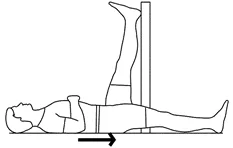
Stretching your hamstrings will increase their range of motion and flexibility. Try stretching in various positions such as standing, sitting, or lying down to stretch your hamstrings. Repeat each stretch multiple times on each leg, holding it for 20 to 30 seconds at a time.
Sliding walls:
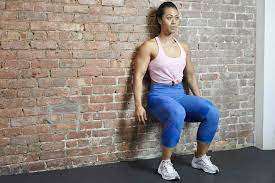
Stand with your feet hip-width apart and turn your back to the wall. Maintaining a bent knee and toe stance, carefully lower yourself down the wall into a squat. Aim for a 90-degree angle in your knees and descend as low as you can. After a brief period of holding still, drive your heel through to stand back up. Perform 2-3 sets of 10–15 repetitions.
Calves Raise:
Proper knee flexion requires strong calves. Place your feet shoulder-width apart and raise yourself up onto your toes as high as you can. Reduce your heel speed gradually. Leg lifts can be performed with both legs raised simultaneously or, for added difficulty, just one leg. Doing 2-3 sets of 10–15 repetitions is the aim.
Knee bend while seated:
Place your feet flat on the ground and settle onto a chair or bench.
Bend the knee as much as you can as you slowly raise one leg off the floor and bring the heel up to your buttocks.
After a little period of holding this position, carefully drop your legs back to the floor.
Use the other leg for support.
Do 10 to 15 reps. on each leg.
Standing Hamstring Curls
Place your feet shoulder-width apart and use a chair or wall for support if needed.
As though attempting a butt kick, bend the opposite knee and bring your heel to your butt.
After a little period of holding this position, carefully return your legs to the floor.
Continue with the opposite leg.
For each leg, begin with 10 to 15 reps, and as you gain strength, progressively increase.
Prone Knee Flexion:
With your legs straight, lie face down on a mat or bed.
Keeping your thigh on the mat, bend the opposite knee and bring your heel to your glutes.
After maintaining the position for a few while, slowly lower your legs back down.
On the other leg, use the same method.
Repeat 10 to 12 times.
Seated knee flexion stretch:
Sit on a chair or bench’s edge with your feet flat on the floor.
Stretch one leg out in front of you, keeping the heel on the ground.
Bring your heel closer to your glutes, flex your knee, and slowly glide your leg back towards you.
After 15 to 30 seconds of holding the stretched posture, lightly touch the front of the thigh and knee.
Release the strain gradually and return the leg to its starting position.
With the opposite leg, repeat the stretch.
Perform 2 to 3 times for each leg.
Always begin with a weight or level of resistance that challenges you while letting you keep your form correct.
Special Test For Knee Flexion
When assessing knee flexion, medical professionals can utilize a variety of specialized tests to evaluate specific problems or injuries. These are a few popular customized knee flexion tests:
Passive knee flexion test:
The subject is put through this test while lying supine. In an attempt to maximize the patient’s range of motion, the examiner carefully flexes the knee. The test highlights potential restrictions and assists in determining the patient’s range of passive knee flexion.
Heel-to-buttock test:
The examiner attempts to move the patient’s heel to the buttock while the patient is in a prone position by bending the knee. This exam evaluates the capacity for complete knee flexion and can detect any restrictions or discomfort experienced during motion.
Test of Gastrocnemius Length:
One of the calf muscles, the gastrocnemius, may occasionally inhibit knee flexion. The patient stands with their hands up against a wall, one leg straight back, heel on the ground, and the other leg forward with a small bend in the knee during this test. In the extended leg, the patient will struggle to maintain full heel contact with the ground if the gastrocnemius muscle’s flexibility is restricted.
Ober’s test:
The purpose of this test is to evaluate the iliotibial (IT) band’s flexibility, which has an impact on knee flexion. With his lower leg stretched and his upper body flexible at the hips and knees, the patient is lying on his side. After stabilizing the patient’s pelvis, the examiner carefully extends and abducts the lower leg. The leg stays raised when the IT band is tight, suggesting a poor range of motion.
Thomas’s test:
While the primary objective of Thomas’ test is to evaluate hip flexion, it can also shed light on knee flexion. With one knee bent toward the chest and the other leg hanging on the table, the patient is lying on the table. Limited knee flexion may also be indicated if the hanging leg is unable to move to its entire range of motion because of tightness in the quadriceps or hip flexors.
Goniometry:
Goniometry is a measurement method for determining a joint’s range of motion, which includes knee flexion.
The knee flexion angle is commonly measured using a goniometer, a specialized instrument.
With their legs straight, the individual is lying on a level surface. After pointing the goniometer at the knee joint, the subject is instructed to bend their knee as much as they can.
The measurement and recording of the knee joint’s angle is done.
It is generally accepted that the knee flexion should be between 135 and 145 degrees.
Sit And Reach Test:
The sit and reach test’s primary goal is to measure lower back and thigh flexibility, although it can also provide a hazy indication of knee flexion degree.
Lean back on your seat and spread your legs in front of you.
In front of your heels, place a ruler or tape measure on the ground between your feet.
Stretch your arms as far forward as you can to run them down the ruler or measuring tape.
The hamstrings’ range of motion, which influences knee flexion, is indicated by the distance above the toes.
This test gives a broad picture of the lower limbs’ total flexibility, including the capacity for knee bending.
It is significant to remember that healthcare professionals with the required knowledge and experience typically conduct these examinations. They offer important information that aids in the identification of certain illnesses or accidents involving knee flexion.
What is a Knee extension?
Knee extension is the term for the action of straightening the knee joint to increase the angle formed by the thigh and lower leg. The quadriceps muscles at the front of the thigh, which are crucial for knee extension, are typically linked to this movement.
A key component of numerous movements like walking, running, jumping, and kicking is knee extension. It is a crucial movement in lower body exercises like leg presses, pulses, and squats. It’s critical to strengthen the knee extension muscles, particularly the quadriceps, to preserve knee stability, guard against injury, and enhance functional range of motion.
When evaluating the strength and integrity of the quadriceps muscles as well as the general function of the knee joint, knee extension is frequently measured in a clinical context. Knee flexion contracture, or the inability to fully extend the knee, is a term used to describe a number of diseases or injuries, including neurological issues, joint stiffness, and muscular weakness.
It is important to understand that proper form and technique are required when extending the knee in order to prevent undue strain on the surrounding tissues and joints. It is advised that you speak with a licensed medical professional, such as a physical therapist or sports medicine expert if you have any specific questions or concerns regarding knee lengthening or rehabilitation.
Knee Extensors Muscles
The quadriceps are the main extensor muscles of the knee. These muscles are found on the front of the thigh and the main action is to extend the knee joint.
The quadriceps is made up of:
- Rectus Femoris: The only quadriceps muscle that crosses the hip and knee joints is the rectus femoris, which is situated in the center of the front of the thigh.
- Vastus Lateralis: The largest, strongest, and located most lateral muscle in the quadriceps group. It encourages knee extension and is situated on the outside of the thigh.
- Vastus Medialis: The response medialis, which is situated on the inside thigh, aids in stabilizing the knee (patella) during knee extension. It mainly focuses on exercises meant to address issues with patellar tracking.
- Vastus Intermedius: The vastus intermedius, which is situated a considerable distance between the vastus lateralis and vastus medialis, aids in knee extension and enhances overall quadriceps strength.
Together, these muscles produce the force required to fully extend the knee joint. The hamstrings, which are found at the rear of the thigh, are a muscle group that opposes the quadriceps. Together with the quadriceps, they function as knee flexors to stabilize and regulate knee joint movements.
The maintenance of knee stability, the avoidance of injuries, and the enhancement of the functional range of motion all depend on the proper strengthening and rehabilitation of the knee extensors, including the quadriceps. These muscles are targeted by exercises including leg presses, squats, pulses, and leg extensions, which also serve to increase the muscles’ strength and endurance. As usual, for individual advice and workout recommendations, speak with a doctor or certified fitness trainer.
Knee Extension Range of Motion
Knee flexion contracture, another name for knee extension, typically has a normal range of motion (ROM) of 0 degrees. Put another way, the knee is at a 0-degree angle when it is fully extended.
It’s crucial to remember that for certain individuals, even mild hypertension (over 0 degrees) is within the normal range. The capacity to stretch the knee joint past the neutral 0-degree position is known as hyperextension. Some people have a natural ability to extend their knee a few degrees above 0 degrees without experiencing any pain or issues.
On the other hand, a variety of conditions, including injury, joint stiffness, and muscular tension, can result in restrictions in knee extension. Flexion contracture of the knee occurs when the knee is not fully stretched or cannot extend to 0 degrees. Conditions like muscle imbalances, ligament injuries, arthritis, or post-surgical problems can all lead to knee flexion contracture.
A goniometer, a specialized instrument for measuring joint angles, can be used in a clinical environment to evaluate the range of motion in the knee extension. This assessment aids medical practitioners in determining any restrictions or anomalies and evaluating the knee joint’s flexibility and mobility.
Consult a physician, such as an orthopedist or physical therapist, if you have problems moving your knees or if your range of motion is restricted. Based on your individual needs, they can offer a comprehensive evaluation, a diagnosis, and suitable treatment or rehabilitation techniques.
Here’s how to measure the range of motion in your knee extension:
- Get the patient ready by having them lie down on a level surface, like a bed or examination table, with their legs outstretched.
- Position: Examine that the patient’s knee is fully straight and relaxed. The patient should be at ease and comfortable throughout the examination.
- Beginning stance: With one hand behind their back, support their knee, and with the other, their ankle.
- Active range of motion (AROM): Give the patient instructions on how to actively extend their leg and knee. Encourage yourself to perform these motions gently and slowly.
- Watch and measure: Watch how the patient’s knee joint moves while it is extended. Recognize any restrictions, pain, or discomfort the patient may be feeling. To determine the extent of knee extension, use visual cues.
- Goniometer measurement (optional): For a more precise measurement of knee extension, if one is available, you can use a goniometer, a specialized instrument for measuring joint angles. Align the goniometer’s stationary arm with the thigh’s long axis and its moving arm with the tibia, the lower leg’s long axis. Measure the angle that is created when the patient extends their knee by lining up the goniometer’s center with the axis of the knee joint.
- Repeat the process: To verify accuracy and spot any irregularities in the patient’s movement, repeat the process a few times.
- Document results: Write measurements and findings in the patient’s medical file or examination notes.
Take note of any restrictions, discomfort, or anomalies found during the test of knee extension. It’s crucial to keep in mind that a licensed healthcare provider, such as an orthopedist, physical therapist, or doctor, should evaluate the knee extension range of motion. They are equipped with the skills and information needed to precisely evaluate the knee joint and interpret the results.
Test of Knee Extension
A clinical assessment used to evaluate the strength and range of the knee extension action is the knee extension test. It is sometimes referred to as the active knee extension test or the straight leg lift test. The evaluation of the integrity and function of the quadriceps and knee joints is often carried out by medical specialists, particularly those in the fields of orthopedics and sports medicine.
Typically, the knee extension test is carried out as follows:
- Preparation: Typically, the test subject rests on their back on a hard surface, such as an examination table. The ankles are relaxed and the legs are fully straight.
- Test Execution: Grasping the heel and offering support beneath the thigh, the examiner delicately raises one leg off the table. Next, the leg is raised to the ceiling while maintaining its straightest possible position by progressively extending the knee.
- Observation: During the knee extension, the examiner watches how the leg moves and is positioned. They record any pain or discomfort the patient feels, the angle at which the knee rests, and any accommodative movements or limits.
- Range of motion assessment: Using a goniometer, a device for measuring joint angles, the examiner measures the angle of knee extension. In order to measure the angle reached during knee extension, a goniometer is often positioned in relation to the femur and tibia.
- Strength Assessment: By using mild resistance or asking the subject to push their arm, the examiner may measure the subject’s strength during knee extension. This aids in evaluating the quadriceps’ capacity to produce force during knee extension.
A person’s capacity to fully extend their knee joint, potential restrictions, muscle imbalances, and general quadriceps function can all be determined with the help of the knee extension test. Diagnoses for ailments including quadriceps strains, patellofemoral dysfunction, or issues following surgery that impair knee extension may benefit from this.
It is significant to remember that healthcare professionals who are qualified to conduct and interpret these evaluations typically provide the knee extension test. It is advised that you speak with a trained medical professional, such as an orthopedist or physiotherapist if you are worried about the mobility or function of your knee. They may perform a thorough assessment and provide guidance based on your particular needs.
Exercises for Extension of the Knee
Numerous exercises are beneficial for strengthening the muscles involved in knee extension, particularly the quadriceps, and for enhancing knee extension. These are a few knee extension exercises that are frequently suggested:
Straight leg raise:
In the Supine Position, one leg is straight while the other is bent. Straighten the extended leg and raise it off the ground by contracting its quadriceps. Lower it once more after holding it for a short while. Repeat multiple times, then switch your legs.
Quad Sets:
Place your feet in front of you and sit or lie down. Maintaining a straight leg, press the back of the knee into the floor or other surface to contract the quadriceps. Continue for multiple sets.
Short Arc Quads:
While lying on your back, rest your knees on a towel or foam roller. As you raise your legs off the towel or roller, keep your thighs flat and gradually straighten your knees. After a few seconds of holding it in the stretched position, lower it. Repeat many times.
Wall slide:
Keep your back resting on a wall in a standing position with your feet shoulder-width apart. With your knees in line with your toes, take a partial squat as you slide up the wall. Gradually Straighten your knees. Repeat many times.
Static Bicycle:
Riding a stationary bike can help you develop your quadriceps and promote knee extension. Choose a resistance level that is comfortable for you to start with, and pedal carefully, making sure to completely extend your knees with each stroke.
It’s crucial to begin these workouts at a level appropriate for your present flexibility and strength. It is advised that you consult a healthcare professional, such as a physiotherapist if you have knee problems or issues. They can offer individualized advice, identify the best workouts, and ensure correct form and technique to prevent future injury.
Keep in mind to pay attention to your body, begin cautiously, and as you advance, progressively increase the exercises’ intensity or complexity. To minimize the chance of damage and get the best outcomes, consistency, and correct form are essential.
Special Test For Knee Extension
Various tests are used to assess knee extension and associated conditions. Here are a few illustrations:
Test for the active knee joint:
This exam evaluates an individual’s capacity for active knee extension. The individual tries to straighten their knee as much as possible while lying on their back with their legs fully extended. The researcher stretches the knee and notes the angle that is achieved using a goniometer.
Passive knee extension test:
During this test, the subject is asked to rest while the tester checks their leg and softly extends their knee joint. When doing a passive knee extension, the examiner watches the range of motion attained and looks for any restrictions or pain.
Ober’s test:
The purpose of this test is to evaluate the iliotibial (IT) band’s contracture or tightness. With his legs bent, a man is lying on his side. When the examiner lifts the leg, it falls effortlessly off the table. They then gradually droop their legs down to the table. A tight IT band is indicated if the leg stays vertical and does not come into contact with the table.
Ely’s test:
This test assesses the rectus femoris muscle’s tension or contraction. The examiner places the patient in a prone position and bends his knee so that the heel touches the buttock. Rectus femoris is indicated if a person’s hip lifts off the table while their knee is bent.
Thomas’s test:
This test aids in determining how tight the hip flexors are, which may have an impact on knee extension. With one knee pulled up to his chest, a man is lying on his back on a table’s edge. With one leg extended, it drapes over the table. Hip flexor strain is indicated if the extended leg lifts off the table or is unable to lie down.
These exams are commonly used to evaluate knee extension, spot potential restrictions, and detect particular illnesses or muscular imbalances in addition to other clinical evaluations. These examinations are typically administered by medical experts with the necessary training, such as orthopedists or physical therapists, who are qualified to carry out and interpret them correctly.
Conclusion
Healthcare workers, physiotherapists, sportsmen, and anybody looking to restore knee function or cure injuries must all understand knee flexion and extension. Knee flexibility, stability, and general joint health can all be improved by strengthening the corresponding muscles and using the right techniques.
FAQs
What are knee flexion and extension?
Flexion: Knee flexion is defined as bending or moving the knee joint, which causes the angle between the femur (thighbone) and tibia (shinbone) to decrease.
Extension: Knee extension is the term for the action of straightening the knee joint to increase the angle formed by the thigh and lower leg.
What is the normal knee flexion?
Adults are often thought to have a normal range of motion for their knees between 135 and 145 degrees. This implies that the knee joint may be bent in a way that causes the heel to approach or contact the buttock when the lower leg approaches it.
What is the normal knee extension?
It’s crucial to remember that for certain individuals, even mild hypertension (over 0 degrees) is within the normal range. The capacity to stretch the knee joint past the neutral 0-degree position is known as hyperextension. Some people have a natural ability to extend their knee a few degrees above 0 degrees without experiencing any pain or issues.
What happens during knee flexion?
The quadriceps tendon, which is pulled by the quadricep muscles as you straighten your leg, pulls on the kneecap, causing the knee to extend. The hamstring muscles tighten when you bend it, bringing the tibia back and flexing the knee.
What muscles flex and extend the knee?
The knee is bent or straightened by the muscles surrounding the joint. The muscles that cause the knee to bend or unbend are known as the common knee muscles. These include the hamstrings and gastrocnemius, which flex (bend) the knee while the quadriceps extend the knee (straighten the knee).
References
Patel, D. (2023, July 11). Knee Flexion And Extension – Movement, ROM, Function, Exercise. Samarpan Physiotherapy Clinic. https://samarpanphysioclinic.com/knee-flexion-and-extension/

